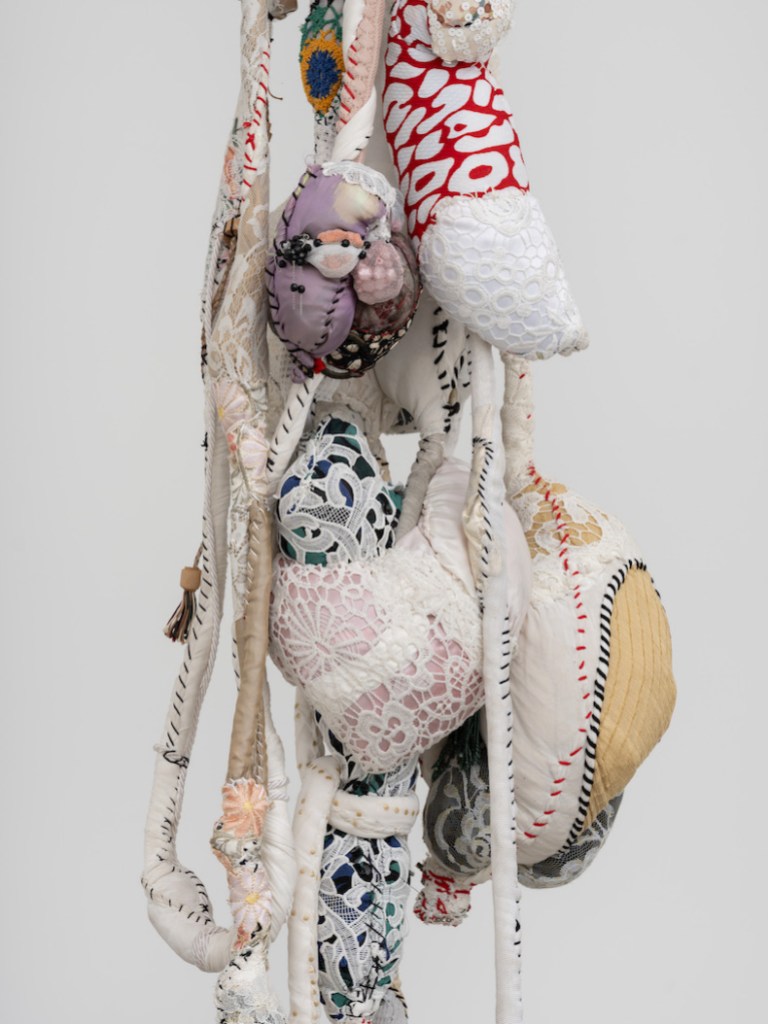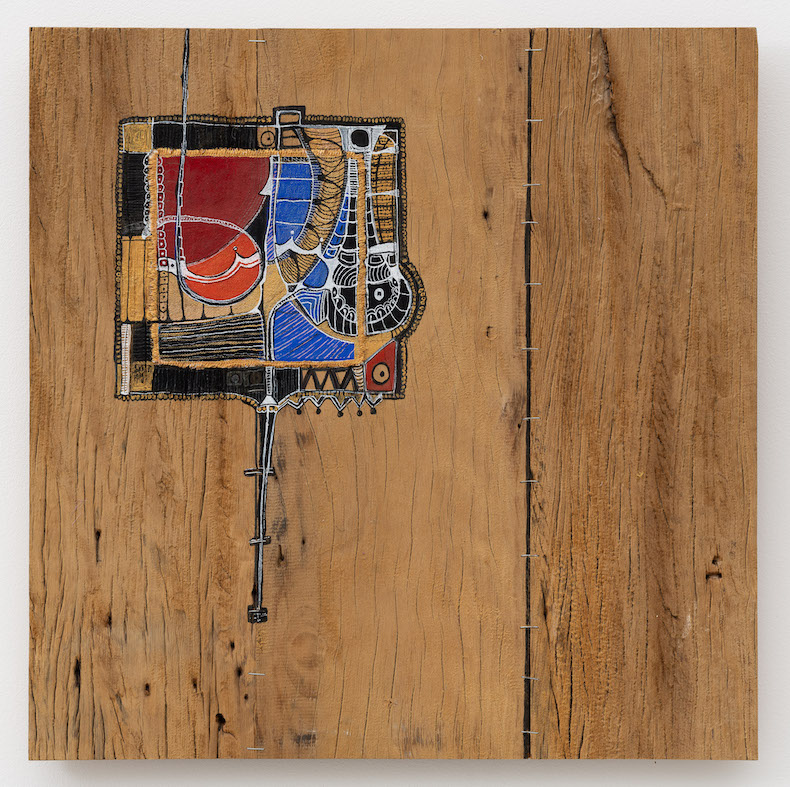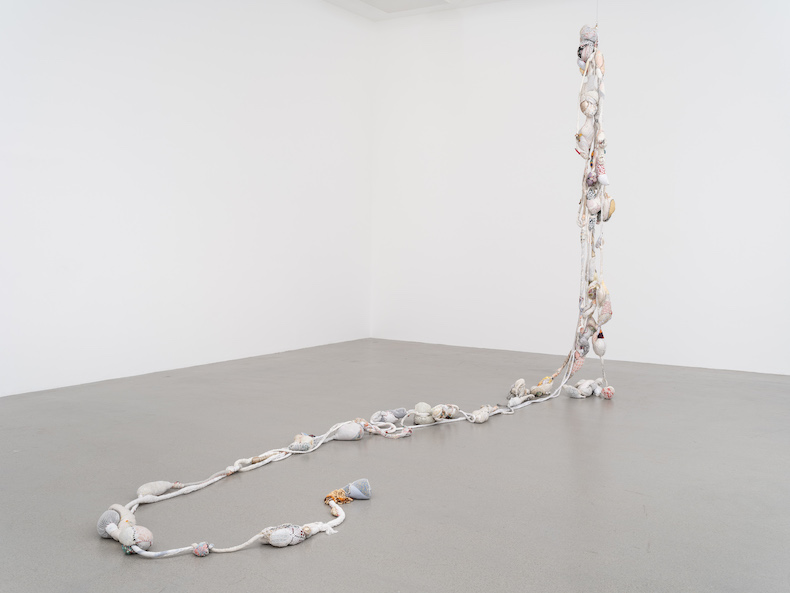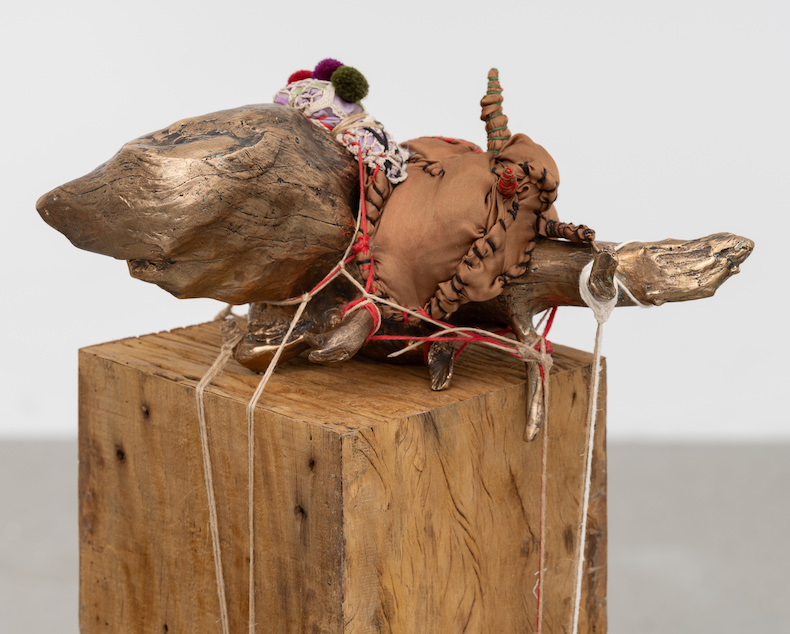The Brazilian artist Sonia Gomes takes second-hand fabrics and other found materials – such as driftwood, furniture and birdcages – and turns them into amorphous sculptures that hang from the wall or dangle from the ceiling. Gomes has presented her work at two editions of the Venice Biennale and, in 2018, became the first Black woman to have a solo exhibition at the Museu de Arte de São Paulo (MASP). With an exhibition of her work at the Storm King Art Center in New York on until 10 November, Pace Gallery is now presenting Gomes’s first exhibition in the United Kingdom. Among the new works featured is Tereza (2025), which combines several of Gomes’s unfinished pendant works into one elongated form that stretches out through the space, and her first series of bronze sculptures, which have been cast from textile-wrapped branches and burls.
Portrait by Pablo Saborido; courtesy the artist
Where is your studio?
In Pinheiros, a neighbourhood in São Paulo, where houses still resist real-estate speculation.
How would you describe the atmosphere in your studio?
It is a harmonious place where human relationships are cordial and brought closer together through art and nature. In the studio, we have a garden that everyone helps to maintain and enjoy, as it features herbs that we harvest to make tea. For now, the fruit is left for the birds.

Is there anything you don’t like about your studio?
Not in terms of physical space, but we are located in an area undergoing urban transformation. Even though I mentioned resistance earlier, we suffer from significant noise pollution during the day. Residents are fighting against it.
What does your studio routine look like?
When I get to the studio, I start by walking through the space. There are always several works in progress, so I see which one is calling me that day. I have three assistants who support the process – sewing, preparing canvases and wood, and helping with finishing touches. I’m not an early riser, so I usually begin around noon and keep going for as long as I feel like working. The work really fills all my time.

Do you work with anyone in your studio?
Yes, but silence is essential for my creativity, and I don’t like to overcrowd the studio. In fact, I have a poster that says ‘learn silence’.
Do you have many visitors?
Yes, many, from school groups, university students and researchers to foreign curators. I receive many requests for visits and reserve Fridays for this, so I can welcome them calmly and attentively.

Who is the most interesting or unusual visitor you’ve had?
I welcome everyone equally and respect everyone’s time in the studio. I leave visitors free to explore and then make myself available for spontaneous conversations. I don’t like to impose a reading of the work on the visitor, as I believe that the works hold mysteries that sometimes even I don’t know. The work is open, so I respect everyone’s reading.
Do you listen to anything while you work?
Music, always, various styles, because the work chooses the music it wants. My work is musical – it carries rhythms, pauses and the movement of dance. All of this helps me to understand and respect the time each work asks for.

What is the most unusual object in your studio?
I was born in Minas Gerais, so I always have bottles of cachaça on hand to serve to visitors. In addition, I have loved frogs since I was a child, so I have a collection of frog souvenirs that I received as gifts.
What is your most well-thumbed book?
I often revisit the work of Clarice Lispector, an author I have been reading since I was a teenager. In fact, the title of my exhibition at Pace comes from a line in one of her novels. I also really like and often revisit Rainer Maria Rilke’s book Letters to a Young Poet, which I consider essential reading for every young artist.
‘Sonia Gomes: É preciso não ter medo de criar’ is at Pace Gallery, London until 15 November.
